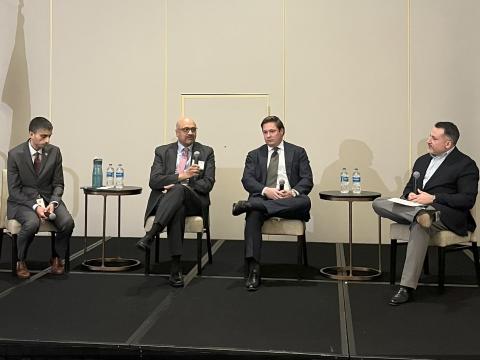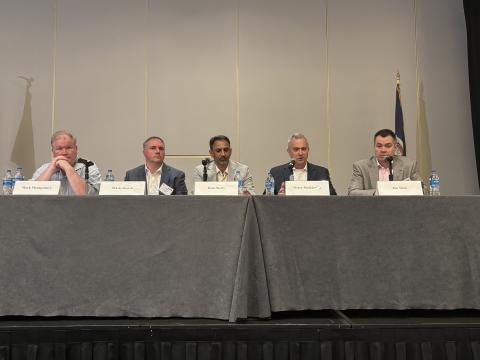Experts Identify Emerging Technologies
As the tentacles of technology reach further and deeper into mainstream uses, their influence on the job market, man-machine interactions, government agencies and the military will grow exponentially. Capabilities once thought of as fodder for science fiction have become science fact at such unpredictable speeds organizations will need to understand the implications quickly if they hope to take advantage of the benefits they offer and not fall behind the curve.
Among the top technologies most likely to affect the public and private sectors are advanced manufacturing techniques, cloud computing, big data analytics, advanced cybersecurity, quantum computing, mobile communications and computing, artificial intelligence and blockchain.
A recently released overview of these technologies enumerates some of the ways organizations will experience change because of evolving capabilities in the near, mid and long terms. “Technology Vectors” is a quick but in-depth look at the importance, implications and challenges they will bring.
Members of AFCEA International’s Technology Committee create the Technology Vectors presentation annually; however, the material is designed to be updated throughout the year as technologies evolve.
In one section of the presentation, committee members explain how advanced manufacturing will enable organizations to carry out missions more efficiently and effectively. The techniques, which include additive manufacturing, 3D printing and printed electronics, will deeply impact a variety of businesses, from construction to computers. For example, 3D printing and modular units already reduce costs and allow for the improved design of parts, homes, cars and military equipment.
Although these methods only account for about 10 percent of manufacturing today, TechCast Global, which assisted with the report, predicts that high-tech modular units made via 3D printing will make up 30 percent of new construction by the mid 2020s.
The new techniques will certainly bring advantages. For example, more rapid building also means quicker rebuilding, speeding disaster management. For this reason, FEMA is a major proponent of modular building. Hurricane Katrina displaced 1.5 million people and destroyed 200,000 homes in the New Orleans area. 3D printing seems perfect for building emergency shelters after this kind of natural disaster.
Advanced cybersecurity is another highlighted technology. The evaluation surmises that a “Cyber Armageddon” is less likely than a continuing wave of small assaults that wear away at infrastructure and morale. Experts agree that more powerful cybersecurity tools are being developed and will reach the 30 percent adoption level by about 2023.
In examining the future of mobile technology, committee members point out that connectivity challenges remain but predict seamless roaming will occur in the long term.
For more extensive use of wireless technologies within the U.S. Defense Department workforce, overall foundation work needs to be done to reduce the burden on mission owners who must justify mobile expenditures to realize a mobile-first vision. A high-level but comprehensive business case analysis will identify cost areas within the department’s mobile implementation. This must be addressed to allow the benefits of mobility to justify more applications and use cases. However, this work can become the model for deploying virtually all future nonweapon systems new technologies, the report states.
Additional committee members insights into the paths other leading technologies are likely to take in the near, mid and far terms are available online.






Comments